
NASCAR Playoff format can be a little confusing but understanding the basics can help you follow the action better. Here 6 things every NASCAR fan should know about the Playoff format:
6. Structure of the Playoffs: Rounds and Eliminations
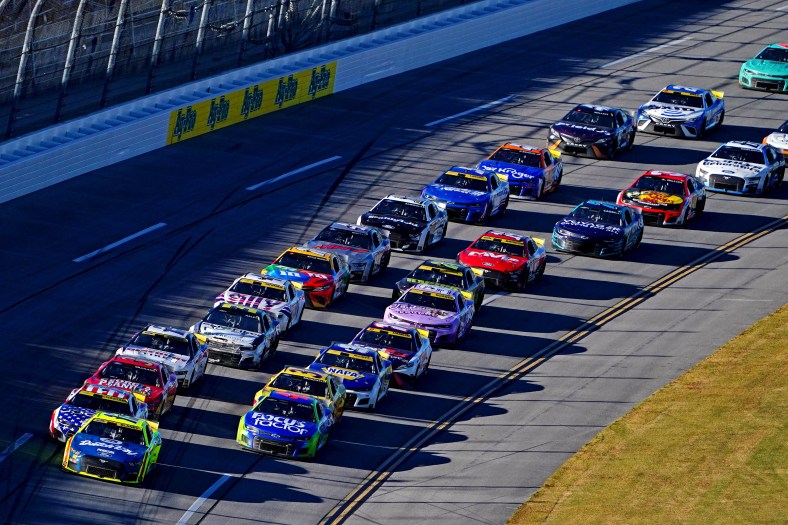
The NASCAR playoff format is divided into four rounds with the elimination taking place at the end of each round. Here’s a breakdown:
- Round of 16: The playoffs begin with 16 drivers. In three races, the four drivers with the fewest points are eliminated. The races in this round are at Atlanta, Watkins Glen and Bristol. In order to move forward a driver has to win one of these races or score enough points to be within the top 12.
- Round of 12: The remaining 12 drivers race in another three races. After these races, four more drivers are out, and there are only eight drivers remaining. This round includes races at Kansas, Talladega and the Charlotte Roval.
- Round of 8: The next three races will decide the final four drivers that will move to the championship race. After the races at Las Vegas, Homestead-Miami, and Martinsville, four drivers are cut out.
- Championship 4: The last race at Phoenix Raceway determines the NASCAR Cup Series Champion. In this knockout race format, the last man standing among the four contenders emerges as the champion.
NASCAR gives points at the beginning of each round. At the same time, bonus points earned during the course of the regular season can be used to give some drivers an edge. Non-playoff drivers also compete in these races which can influence the strategies of playoff drivers.
Also Read: Joey Logano wins his way into NASCAR playoff second round; mixed results for others
5. Non-Playoff Drivers Still Compete
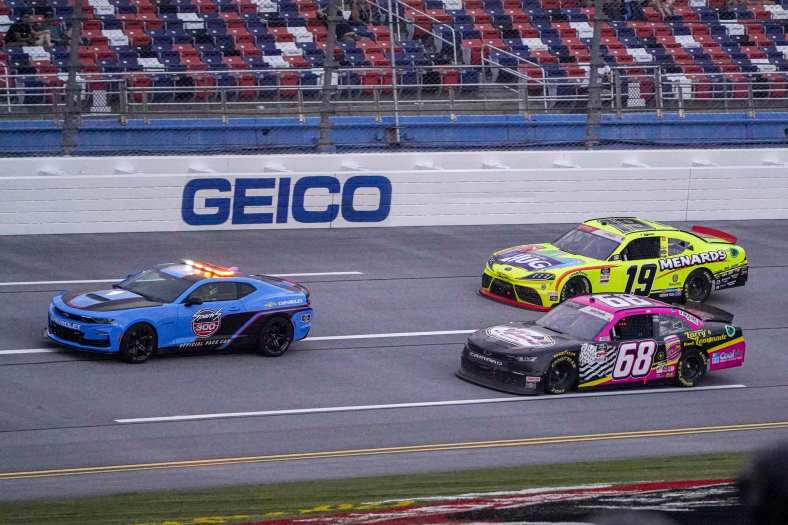
Non-playoff drivers who failed to make the playoffs still participate in races during the playoffs but they are not eligible to win the title. This is important, particularly in ensuring that the races themselves remain exciting and competitive. Because their removal would mean the reduction of the field size and the increase of the passing difficulty, this means that some drivers who do not qualify for the playoffs are still eligible to win races.
Non-playoff drivers played a crucial role in the first round of the 2022 NASCAR Cup Series playoffs by winning three important races. At Darlington Raceway Erik Jones won, Bubba Wallace won the Kansas Speedway race, and Chris Buescher was the winner in the Bristol Night Race.
Further, non-playoff drivers are still earning points and fighting for positions in the championship. It determines their final ranking and their prize money.
Related: 5 must-watch drivers in 2024 NASCAR Playoffs, including Kyle Larson
4. The Importance of Playoff Points
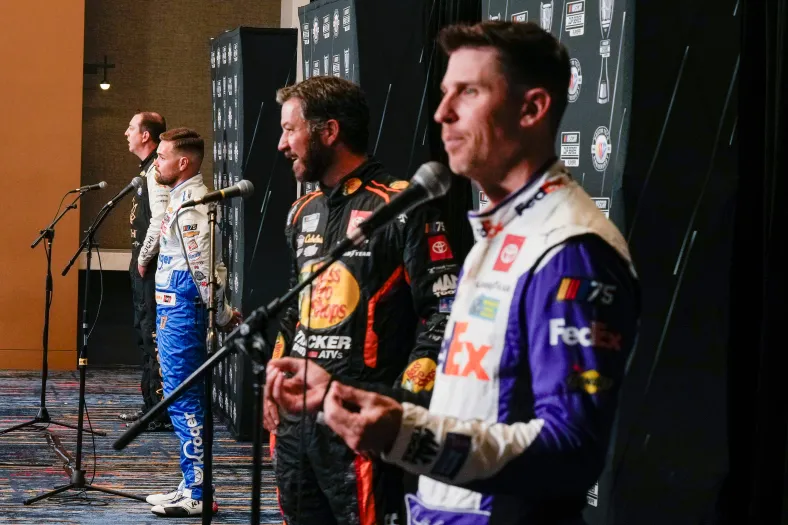
Playoff points are crucial in NASCAR as they assist drivers in moving to the next round. Drivers accumulate playoff points by winning the race (five points) and stages (one point per stage victory). The top 10 drivers in the regular season also get extra playoff points. The winner of the regular season gets 15 points.
These points act as a cushion in eliminations, transferring to each round. A driver with more playoff points can move to the next round even if he has a bad race. NASCAR sets points to zero at the beginning of each round, but playoff points offer an advantage. It does not extend to the Championship 4 race.
3. Elimination Format and “Win and You’re In” Rule
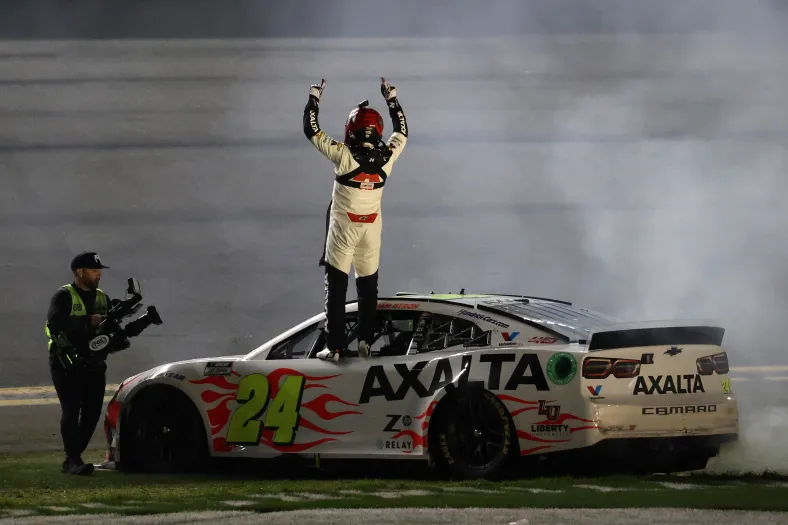
In each round of the NASCAR Playoffs, four drivers are eliminated from the race based on their points. However, there’s a twist: if a playoff driver finishes a race during that round, then he automatically moves to the next round. This ‘win and you’re in’ system means that even if a driver has a bad particular round they are still able to qualify for the next round because one win is enough to keep the dream alive.
Also Read: Kyle Larson, Chase Briscoe NASCAR championship hopes take hit in Atlanta
2. Driver and Owner Playoffs Are Different
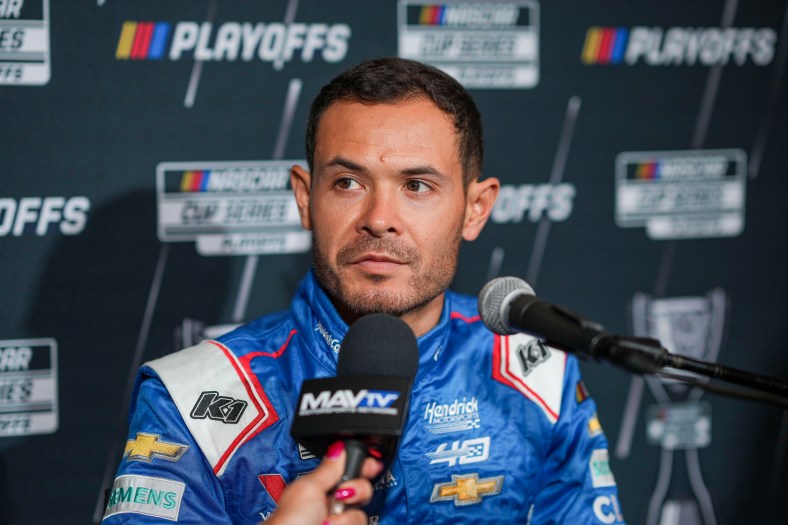
The NASCAR driver playoffs and owner playoffs are similar but there’s a key difference between them. The driver playoffs focus on the driver’s performance, while the owner playoffs consider the performance of a specific car, no matter which driver drives it. Thus, a car can still gain points and get into the owner playoffs even if the car’s original driver is out of the championship race.
For instance, in 2022 Kyle Larson was out of contention after Round of 12. As for his №5 Hendrick Motorsport team, it was still eligible to compete in the owner playoffs. The owner points system measures several aspects of the car’s performance, not just the driver’s. Similarly, Kurt Busch had to quit the driver playoffs after an injury at Pocono Raceway. However, his №45 car was still moving up in the owner playoffs with different drivers.
This system makes it possible for the teams to stay competitive for the owners’ championship which is essential for the end-of-the-year bonuses. Actually, most of the championship money comes from to the owners’ points.
1. Championship 4: A One-Race Showdown
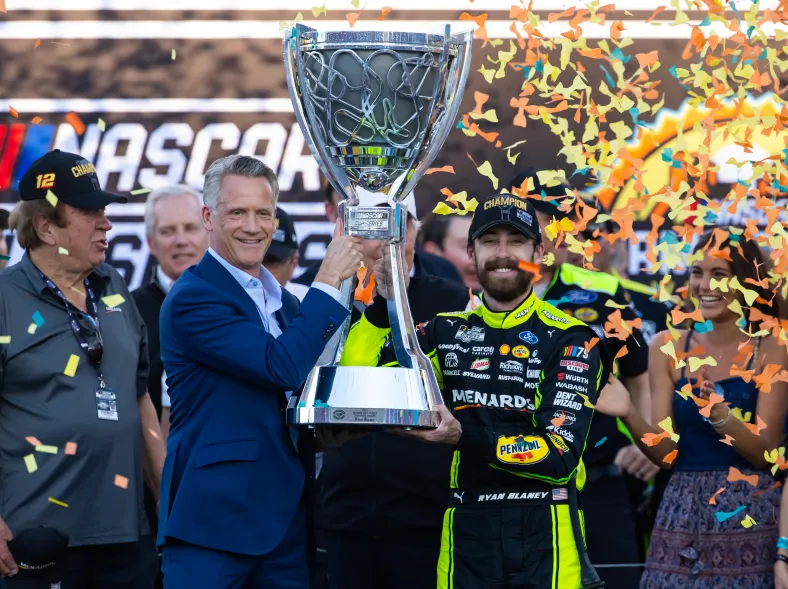
The NASCAR Championship 4 is a single-elimination race where the winner is the champion. Phoenix Raceway usually hosts it. In this final, the four drivers fight for the championship with no points from the previous rounds. All four drivers begin the race with 5,000 points to begin with, thus giving everyone an equal chance. In this race, whoever has the highest rank at the end of the race is declared the champion no matter if he won the race or not.
There are no stage points in this format; therefore the winners depend on the finishing positions of Championship 4 drivers. Also, these drivers can choose where to place their pit box and this is crucial during the race. The driver who claims the championship doesn’t need to come out victorious in the last race, but it’s common practice. This format allows the possibility of anything to happen, and that’s why it provides the best approach to ending the NASCAR season.
An example of this is Ryan Blaney who became the 2023 Cup Series champion even though he did not win the race for the championship.